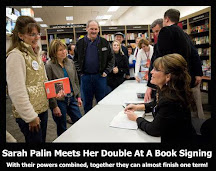CNN uses the tag, “The Most Trusted Name in News” and FoxNews uses the tag, “Fair and Balanced”. Before cable 24/7 news, networks aired news broadcasts as an informational driven show. But cable news are ratings driven. Being reliant upon ratings, cable news shows compete for breaking news and are less concerned about accuracy.
News broadcasts were originally public service announcements, educating the public of world and local events. In the early 1900’s, the first non-print news came in the form of newsreels, which were in the form of short documentary films and were aired via the movie distribution network. Newsreels transformed into radio broadcasts in 1920 and centered around preliminary election results, but the “modern day” television news shows began in 1928 with daily ten-minute news briefs. By 1940, NBC produced regularly aired, 30-minute news shows. There was uniformity in their format. News analysts, reporters, and correspondents gathered information, prepared stories, and produced shows which informed the public about local, state, national, and world events. They were designed to be informative, and thus did not have a need to sensationalize for ratings.
Ted Turner launched Cable News Network (CNN) in 1980 to not only offer a 24/7 news show cycle, but also to be able to expand on stories. A companion channel CNN2 was established to fit the 30-minute broadcast format in a repeating fashion in 1982. In February 1996, Fox News was launched by Rupert Murdoch and former US Republican Party political strategist Roger Ailes under the reasoning to satiate the appetite for news - particularly news that explains how it effects people. Fox News placed heavy emphasis on visual presentation and utilized colorful and attention grabbing tags in order to compete through ratings. Their news stories were designed to have an obvious conservative slant, as opposed to ABC, CBS, NBC, CNN, and CNN2 who produced stories to be informative. Then in July 1996, MSNBC came on the scene to promote NBC’s news sources.
It didn’t take long for the three cable news channels to compete for ratings, each trying to establish their niche which separates them from the others. Fox News continued to promote their conservative opinionated news coverage. In 2001, MSNBC tried to emulate Fox News’ formula of opinionated news shows, countering Fox News’ conservative slant. Leading up to the 2008 elections, CNN devoted much of their air time to political coverage, including hosting political debates. This proved to be CNN’s highest ratings and they maintained their working formula of breaking news coverage, with the emphasis on the “old style” of news broadcasting, being informative, not sensational.
The rating war took it’s toll on news journalism. Not only did ABC, NBC, and CBS suffer viewership, but the rating driven drive for breaking news coverage sometimes sacrificed accuracy. Ratings became equated with power and influence and opinionated news dominated the ratings. With Fox News, the more sensational and opinionated news shows resulted in higher ratings.
But ratings are simply measuring the popularity of these channels and shows, not accuracy or reliability. When turning on a news broadcast, is it for factual coverage of events or for entertainment? Does society benefit more from accuracy or from sensationalism? When sensationalism and popularity wins out, which form of information is being used to educate children and students? And when we form our opinions based upon the news coverage we choose to subject ourselves to, are our beliefs based on accurate facts or on sensationalized sound bytes?
-Silence Dogood
About Us

- Gene A. Hale
- York, Pennsylvania, United States
- I am a very creative person with years of experience in many different creative fields. I am a published writer writing for political blogs as well as product reviews. I have also worked in the Digital Audio/Video special effects business too.



0 comments:
Post a Comment